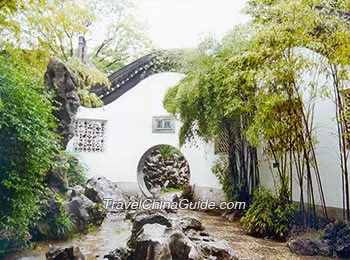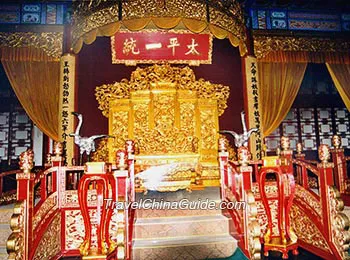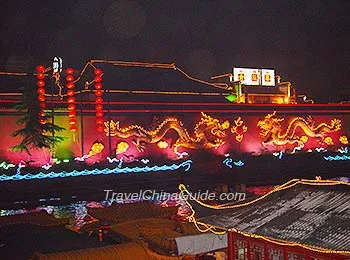Top 10 Things to Do in Nanjing
Nanjing, capital of Jiangsu Province, is a historically and culturally famous city in China. In ancient times, it had been the capital through six dynasties, for 500 years in total, and many cultural relics are preserved to this day. Located on Yangtze River Delta, Nanjing is endowed with abundant waterscape. For tourists who visit this city for the first time, the recommended top 10 things to do in Nanjing are below.
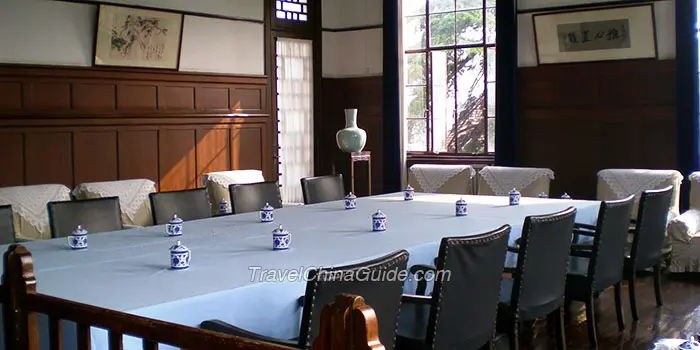
The Presidential Palace was the offical residence for several leaders in China from 1368 to 1949. For those interested in Chinese modern history, this attraction records the ebb and flow of modern China through well-preserved historical materials and cultural relics. Apart from those, the Presidential Palace is also renowed for the juxtaposition of western buildings and Chinese classical gardens. Tourists can tour the Presidential Palace along the Central Route, West Route or East Route. Lying along the Central Route are the National Government and its auxiliary buildings. Zichao Building on this route is a typical western-style from the 1930s. On the West Route, it is highly recommended to visit the office of the Provisional President, Sun Yat-sen, and Xuyuan Garden. The latter perfectly embodies the charm of classical gardens in Southern China. Many other attractions such as the Bu Xi Zhou stone boat and East Garden are also worth visiting.
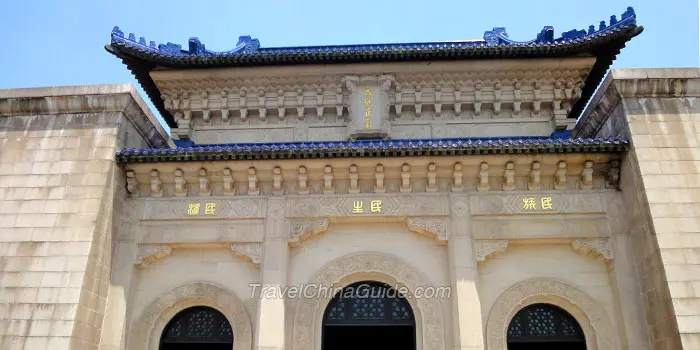
Sun Yat-sen is the father of the Chinese democratic revolution and thus of paramount significance in Chinese modern history. Built in his memory, this august mausoleum is in the shape of a bell and hailed as the No.1 Mausoleum in Chinese modern building history. It covers an area of 133 hectares (329 acres) and nestles upon the expansive Purple Mountain. To visit the Bo’ai Archway, Coffin Chamber and other buildings in the mausoelum complex, tourists need to climb ten flights of stone stairs, totaling 392 stairs. Does it sound like a daunting thing to do in Nanjing? Actually, this layout affords visitors different views from different heights. Moreover, tourists can take sightseeing cars to other attractions in the area including the Music Stage, Xing Jian Ting Pavilion and Guang Hua Ting Pavilion.
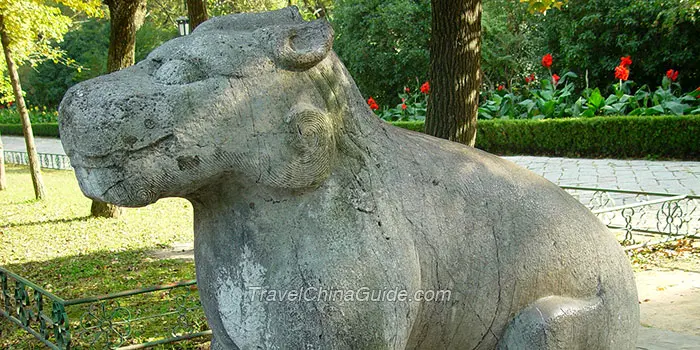
The Xiaoling Mausoleum of the Ming Dynasty was built in 1381 for Zhu Yuanzhang, the founding emperor of the Ming Dynasty (1368-1644), and his empress. It has been listed as a World Heritage site by UNESCO as a representative royal tomb in ancient China. Tourists will be impressed by its sublime layout as well as the fine construction. These two features are best demonstrated through the Sacred Way, 2,400m (2,625yd) long, and cpnsisting of two sections. When walking through the first section, called Stone Elephant Road, tourists will be in awe of the huge stone sculptures of lions, camels, elephants, horses and other, mythical creatures. Ancient Chinese believed they could ward off evil spirits. In the second section, called Wengzhong Path, tourists will see the august sculptures of four Chinese civil officials and four generals, playing the role as guardians of this mausoleum. Surrounded by lush pines and cypresses, tourists can experience the solemnness of this mausoleum. Da Jin Men Gate, Si Fang Cheng Building and Zixia Lake also add to the brilliance of this world heritage site.
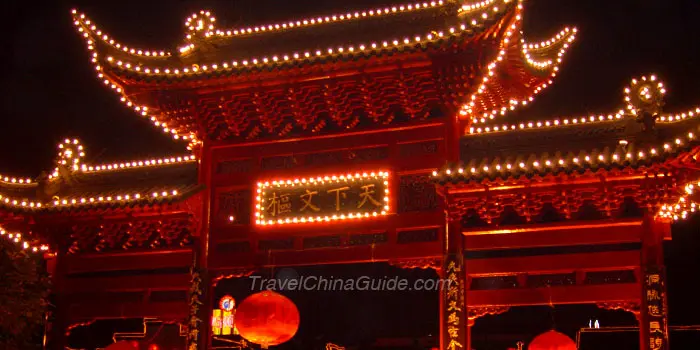
Confucius (551-479 BC) was the founder of Confucianism and a great educator in ancient China. There are many temples in China built in his memory. The Nanjing Confucius Temple is one of China's four most famous Confucian temples. It was also the first “university” in ancient China. So, this attraction is a must for people interested in sinology and a top thing to do in Nanjing. Da Cheng Temple is the main building of the Confucius Temple. Here, tourists can not only appreciate the largest portrait of Confucius in China, but also listen to the lingering ritual music played on fifteen ancient instruments. Moreover, tourists can feast their eyes on the vivid murals which record Confucius’s achievements, as well as more than thirty inscriptions from famous calligraphers. Another attraction worth visiting is Xue Gong (the Imperial Academy), where tourists can experience the life of ancient scholars. Fuzimiao also exhibits beautiful pebbles and other pieces of art. The Fuzimiao Night Market is also a good place to try local cuisine. If you come here around Chinese New Year, in January or February, the Lantern Show is a must-see activity.
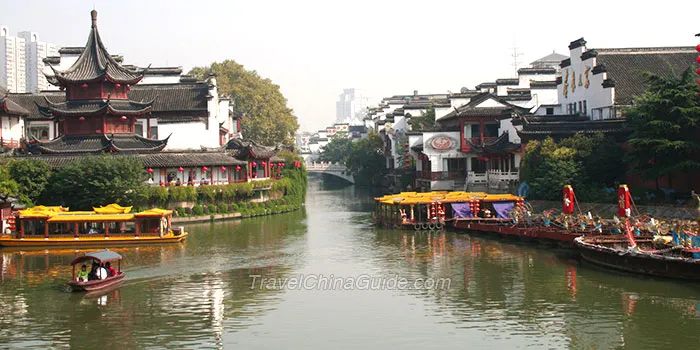
Qinhuai River is the mother river of Nanjing city with a frontage of 5km (3.1mi). In ancient China, many nobles lived along this river and it has now evolved into one of the most prosperous places in this city. For many tourists, taking a boat cruise along the Qinhuai River can be the most leisurely thing to do in Nanjing. The beauty of this river is magnified by the more than forty attractions on both banks, including celebrities' former residences, gracefully-shaped bridges, delicate gardens and colorful lanterns. The best time to visit it is at night. With a brisk wind blowing, tourists can heartily enjoy the night view at a slow tempo on the boat, along with the pleasant sound of Kunqu Opera. It would be an unforgettable experience. Other activities, like the temple fair in spring and gourmet festival in autumn, are also held here.
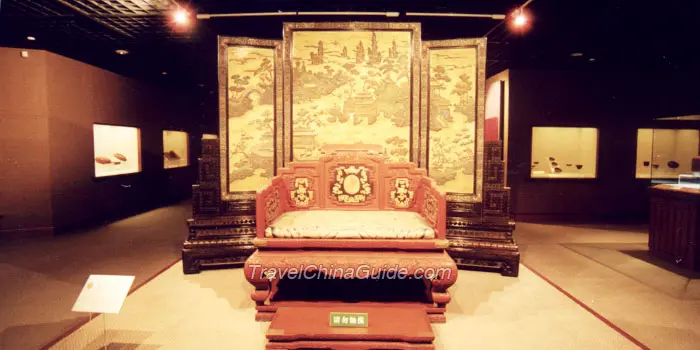
Visiting Nanjing Museum can be the fastest way to get to know this city. The museum comprises six exhibition halls. In the History Hall, various relics from the Tang Dynasty to the Qing Dynasty (618-1911 AD) are exhibited. Through them, visitors are able to appreciate the culture and history of China's southern regions. The Special Exhibition Hall mainly displays antiques and royal cultural relics. If you are fond of Chinese paintings, calligraphy and sculpture, the Art Hall will satisfy your need. Children will definitely like the Digital Hall, in which they can try a ‘time tunnel’ to expereince the ever-changing world. Also, in the Intangible Cultural Heritage Hall, visitors can listen to Kun Opera and try to make Chinese Knot and Paper Cuttings. In the Republic of China Hall, remember to bring your camera. Displays include a period bank, post office, theater and a book store. These can fulfill your dream of living in the early 20th century and show you the interwoven culture between the West and the East.
Nanjing City Wall is the military fortification built in the Ming Dynasty (1638-1644 AD). Compared with the city wall in other cities, the Nanjing City Wall stands out for its irregular shape and four-layered structure. There are thirteen city gates in total and it is highly recommended for tourists to travel from the Shence Gate to Taiping Gate. This section is 6km (3.7mi) and lets tourists not only appreciate the august appearance of the city wall, but also enjoy a bird’s eye view of Xuanwu Lake, Jiming Temple and the beautiful Nanjing cityscape.
Xuanwu Lake is the largest imperial lake in China. It is well-known for the wide range of flora that can be found all year round on the five islands in the lake. Tourists can take pedal boats or electric boats to cruise on the lake or have a stroll on the five islands that are linked by bridges. Yingzhou Island is famous for cherry blossoms in spring and lotus in summer. For those who like take photos, such a colorful background makes visiting Xuanwu Lake a top thing to do in Nanjing. If you are going to travel to Xuanwu Lake in October or November, the chrysanthemum show on Liangzhou Island is waiting for you. Remember to take a walk in the natural rich oxygen atmosphere of Cuizhou Island. Here, the lush pines, cypresses, bamboos and weeping willows are sure to relieve your stress and cheer you up. Huanzhou Island features with rockeries, waterfalls and grotesquely shaped stones. Last but not least, Lingzhou Island will refresh you with the view of Purple Mountain shrouded in the mist.
9
Wuyi Lane
Wuyi Lane used to be site of the residences of two notable families in the Eastern Jin Dynasty (317-420 AD). Poets and calligraphers from these two families played an indispensable role in Chinese culture. Nowadays, streams of tourists come here to admire the vestiges of their ancient art. Many relics of these two families, along with their paintings and calligraphy, are displayed in the Former Residence of the Wang and Xie Families, the Exhibition Hall of Six Dynasties and other halls of sculpture and murals. The modern vitality is also represented through the craft shops and snack bars in this lane.
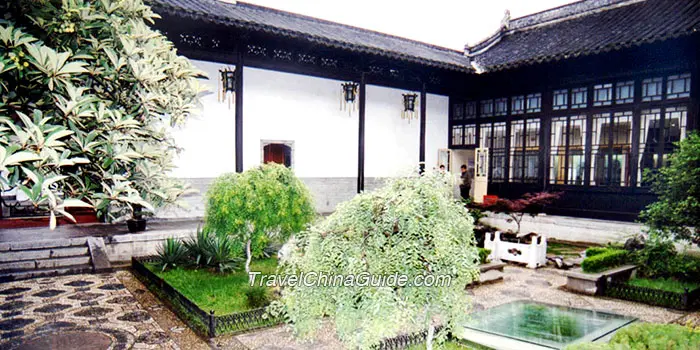
Zhanyuan Garden is the oldest classical garden and one of the top things to do in Nanjing. In this classical garden, tourists can savor the profound history and graceful architectural layout at the same time. In the eastern area of the garden, tourists can wander through the ancient architectural complex built in the Ming and Qing Dynasties (1368-1911 AD). In particular, the Kingdom of Heaven Historical Museum will take you back to the 1850s and 1860s through relics such as the Imperial Seal, Imperial Robe and Treasured Sword. In the west of the classical garden, tourists will gain an escape from routine life by ambling through the delicately-designed rockeries, pavilions, terraces, winding corridors, all to the sound of the guigling of creeks.
- Last updated on Aug. 12, 2025 by Demi Li -
